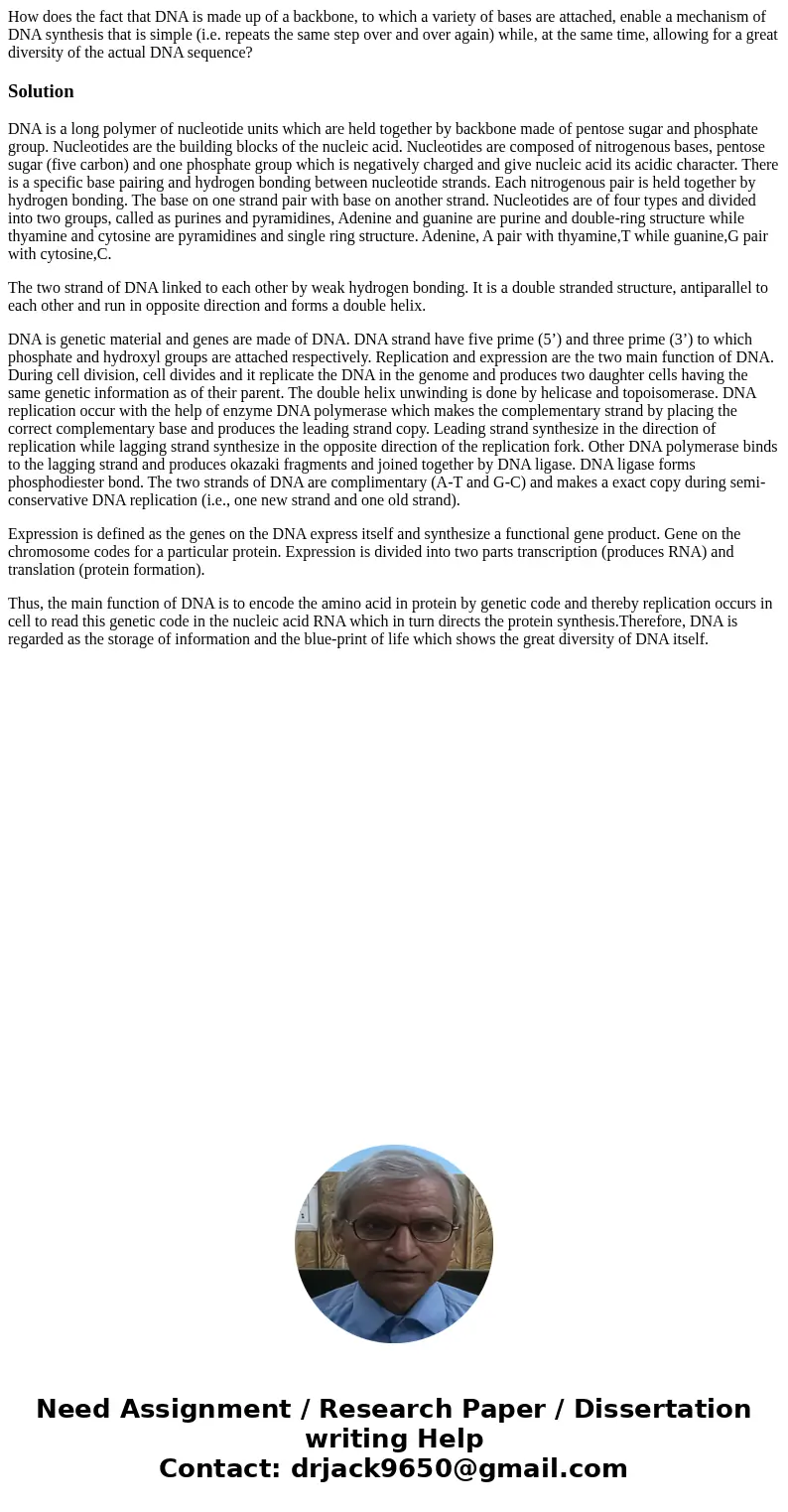How does the fact that DNA is made up of a backbone to which
How does the fact that DNA is made up of a backbone, to which a variety of bases are attached, enable a mechanism of DNA synthesis that is simple (i.e. repeats the same step over and over again) while, at the same time, allowing for a great diversity of the actual DNA sequence?
Solution
DNA is a long polymer of nucleotide units which are held together by backbone made of pentose sugar and phosphate group. Nucleotides are the building blocks of the nucleic acid. Nucleotides are composed of nitrogenous bases, pentose sugar (five carbon) and one phosphate group which is negatively charged and give nucleic acid its acidic character. There is a specific base pairing and hydrogen bonding between nucleotide strands. Each nitrogenous pair is held together by hydrogen bonding. The base on one strand pair with base on another strand. Nucleotides are of four types and divided into two groups, called as purines and pyramidines, Adenine and guanine are purine and double-ring structure while thyamine and cytosine are pyramidines and single ring structure. Adenine, A pair with thyamine,T while guanine,G pair with cytosine,C.
The two strand of DNA linked to each other by weak hydrogen bonding. It is a double stranded structure, antiparallel to each other and run in opposite direction and forms a double helix.
DNA is genetic material and genes are made of DNA. DNA strand have five prime (5’) and three prime (3’) to which phosphate and hydroxyl groups are attached respectively. Replication and expression are the two main function of DNA. During cell division, cell divides and it replicate the DNA in the genome and produces two daughter cells having the same genetic information as of their parent. The double helix unwinding is done by helicase and topoisomerase. DNA replication occur with the help of enzyme DNA polymerase which makes the complementary strand by placing the correct complementary base and produces the leading strand copy. Leading strand synthesize in the direction of replication while lagging strand synthesize in the opposite direction of the replication fork. Other DNA polymerase binds to the lagging strand and produces okazaki fragments and joined together by DNA ligase. DNA ligase forms phosphodiester bond. The two strands of DNA are complimentary (A-T and G-C) and makes a exact copy during semi-conservative DNA replication (i.e., one new strand and one old strand).
Expression is defined as the genes on the DNA express itself and synthesize a functional gene product. Gene on the chromosome codes for a particular protein. Expression is divided into two parts transcription (produces RNA) and translation (protein formation).
Thus, the main function of DNA is to encode the amino acid in protein by genetic code and thereby replication occurs in cell to read this genetic code in the nucleic acid RNA which in turn directs the protein synthesis.Therefore, DNA is regarded as the storage of information and the blue-print of life which shows the great diversity of DNA itself.

 Homework Sourse
Homework Sourse